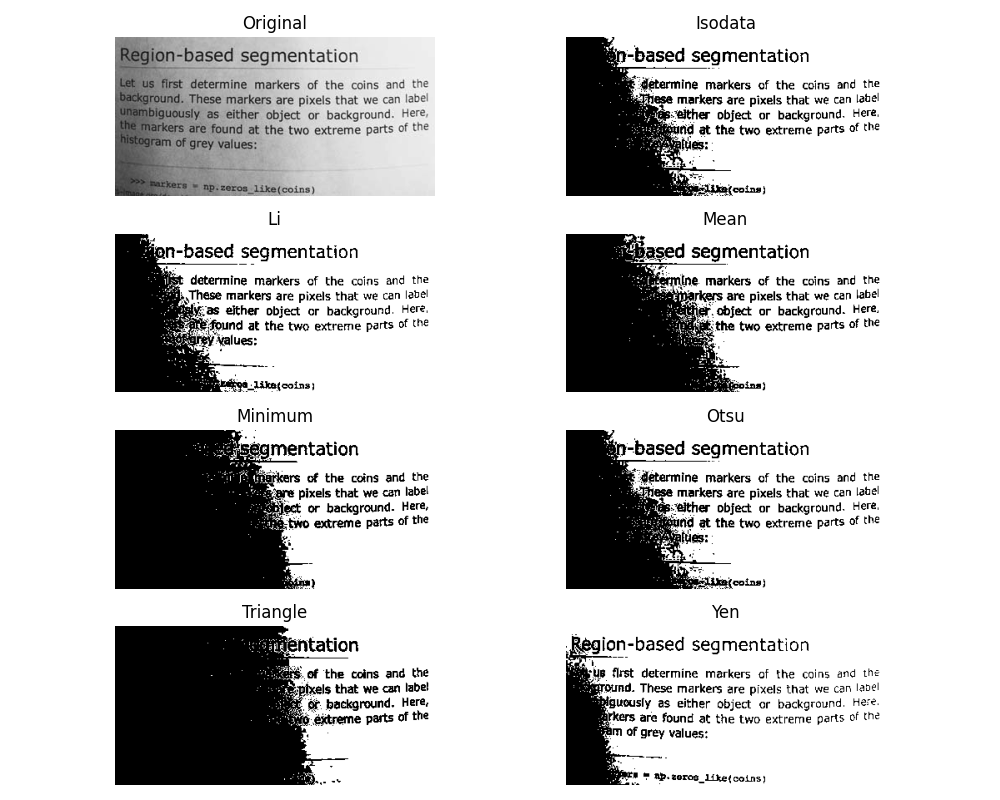注意
转到末尾下载完整示例代码。或者通过 Binder 在您的浏览器中运行此示例
阈值处理#
阈值处理用于从灰度图像创建二值图像[1]。这是从背景中分割对象的最简单方法。
scikit-image 中实现的阈值处理算法可以分为两类
基于直方图。使用像素强度的直方图,并对该直方图的属性(例如,双峰)做出某些假设。
局部。要处理一个像素,只使用相邻的像素。这些算法通常需要更多的计算时间。
如果您不熟悉不同算法的详细信息和基本假设,通常很难知道哪种算法会给出最佳结果。因此,Scikit-image 包含一个函数来评估库提供的阈值处理算法。只需看一眼,您就可以为您的数据选择最佳算法,而无需深入了解它们的机制。
另请参阅
关于秩滤波器的演示。
import matplotlib.pyplot as plt
from skimage import data
from skimage.filters import try_all_threshold
img = data.page()
fig, ax = try_all_threshold(img, figsize=(10, 8), verbose=False)
plt.show()

